Exploring the iPhone 12 Pro Max Wide Angle Lens
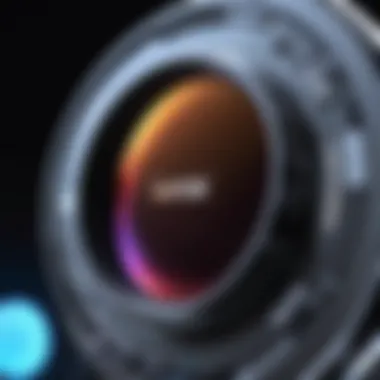
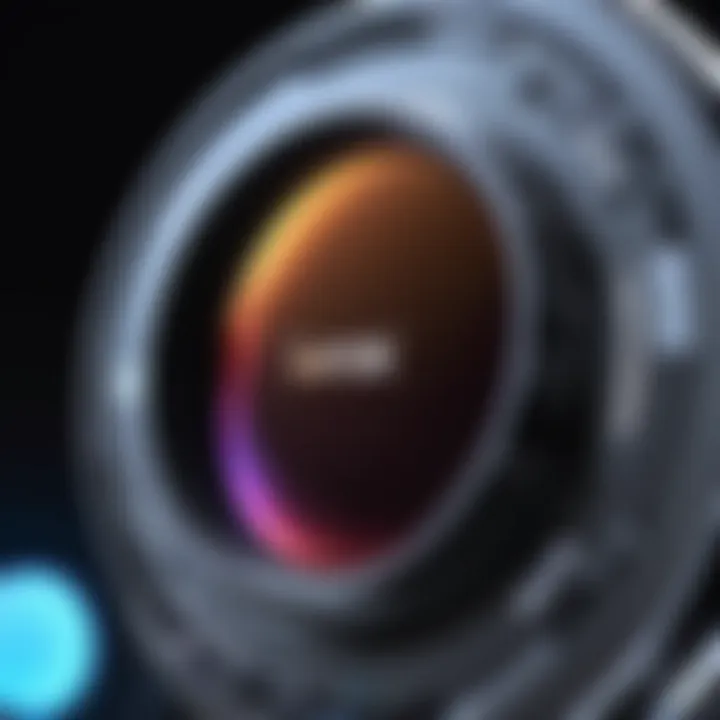
Intro
The iPhone 12 Pro Max represents a significant advancement in mobile photography. Specifically, the addition of the wide angle lens expands creative horizons for users. Given the prominence of photography and videography in modern communication, understanding the capabilities of this feature is essential. In this article, we will dissect the technology behind the wide angle lens, its design, and practical applications. We will also compare it with previous iPhone models to highlight its unique contributions.
Overview of the Technology
Key specifications
The wide angle lens on the iPhone 12 Pro Max boasts a notable field of view of 120 degrees. This allows for capturing more content within the frame than standard lenses. The lens also has an aperture of f/2.4, which helps in taking better photos in low-light conditions. When one considers the sensor size, which measures 1.7uM, it becomes clearer how this lens can produce sharp, vibrant images, enhancing the overall photographic experience.
Unique selling points
Several features distinguish the wide angle lens on the iPhone 12 Pro Max:
- Night mode: The ability to capture detailed images even in low-light environments.
- Smart HDR 3: This technology optimizes contrast and details in bright and dark areas of photographs.
- Image stabilization: Enhanced stability reduces blurriness in handheld shots, improving overall image quality.
These features not only enhance the technical capabilities of the camera but also make it user-friendly.
Design and Build Quality
Material used
Apple's commitment to durability is evident in the iPhone 12 Pro Max. The lens is crafted from high-quality glass, which aids in resilience against scratches and other physical damage. The front cover is ceramic shield, offering improved durability compared to previous models.
Ergonomics and usability
The design of the iPhone 12 Pro Max seamlessly integrates the wide angle lens into its overall form factor. Users find the positioning of the lens convenient, as it allows for easy access during photography sessions. The placement ensures that users can quickly switch from the standard to the wide angle lens, making it optimal for dynamic shooting scenarios.
Capturing vast landscapes or large groups of people becomes straightforward. With just a tap, the transition to the wide angle lens invites creativity without compromising image quality.
"The true advantage of the wide angle lens lies in its ability to reshape the narrative of a photograph, providing context and depth that standard lenses cannot achieve."
Epilogue
The iPhone 12 Pro Max's wide angle lens showcases how technology and design can enhance user experience and creativity. A well-rounded understanding of its specifications, design, and functionality allows users to fully utilize its capabilities. This knowledge is crucial, especially for photography enthusiasts aiming to produce stunning photographs and videos.
Prelude to the iPhone Pro Max
The iPhone 12 Pro Max signifies a pivotal evolution in smartphone technology. Its features have redefined user expectations for mobile photography and videography. This segment will outline the importance of understanding the device, focusing particularly on its standout capabilities, including the wide angle lens. Many consumers now prioritize camera quality, making it essential to explore how the iPhone 12 Pro Max satisfies these demands.
Overview of the Device Features
When assessing the iPhone 12 Pro Max, it is vital to recognize its impressive specifications. The device incorporates a 6.7-inch Super Retina XDR display, offering vibrant visuals and adaptable brightness levels. Internally, it houses the A14 Bionic chip, ensuring high performance while maintaining efficiency. Additionally, this model supports 5G connectivity, addressing the modern trend for faster download speeds.
The camera system, in particular, stands out with a triple-lens setup, which consists of a 12MP ultra-wide lens, a wide lens, and a telephoto lens. Each lens is designed to capture images with precision, improving overall photography experiences.
It's also important to note the build quality. The ceramic shield front cover offers enhanced durability, while the stainless steel frame adds a premium feel. The iPhone 12 Pro Max is both robust and sleek, appealing to a discerning audience. Overall, these features establish the device as a top contender in the smartphone market.
Significance of the Wide Angle Lens
The wide angle lens of the iPhone 12 Pro Max represents a significant innovation in mobile photography. This particular lens enhances the ability to capture expansive scenes, making it ideal for landscape photography, architectural shots, and group photos. Its increased field of view allows users to include more elements in their frames without moving further away.
The excitement around the wide angle lens stems from its potential to redefine creativity in photography.
Furthermore, the wide angle lens provides a unique perspective on subjects, creating a sense of depth and intrigue. With minimal distortion, photographers can produce images that are both captivating and true to life. Understanding the significance of this feature is essential for anyone looking to elevate their photography skills using the iPhone 12 Pro Max.
In summary, the introduction of the iPhone 12 Pro Max sets the stage for a detailed exploration of its wide angle lens capabilities. Through examining its features and the relevance of the lens, this article aims to provide a comprehensive guide that informs and inspires users.
Technical Specifications of the Wide Angle Lens
Understanding the technical specifications of the wide angle lens on the iPhone 12 Pro Max is crucial for users who want to maximize their photography and videography potential. The lens is not just a piece of glass; it embodies complex engineering that significantly influences the images captured. Knowing about its details helps users choose the right settings and understand its limitations and strengths when shooting.
Lens Details and Aperture
The wide angle lens on the iPhone 12 Pro Max features a focal length of 13 mm, which provides a distinct advantage when capturing expansive scenes. With an aperture size of f/1.6, this lens allows a significant amount of light to enter, contributing to better image quality in various lighting conditions. The larger aperture also enables a shallow depth of field, making subjects stand out against blurred backgrounds.
This combination of focal length and aperture makes the lens highly effective for landscape photography, group shots, and creative compositions where space is tight but detail is of utmost importance.
Field of View and Distortion
Field of view is a critical metric when evaluating wide angle lenses. The iPhone 12 Pro Max delivers a field of view of 120 degrees, which enables an impressive capacity to include more of the scene in a single frame. This is particularly beneficial for architectural shots and tight spaces where pulling back to fit everything in is not an option.
However, this wide field of view does come with a drawback: distortion. Photographers might notice bending at the edges of the frame, which can affect the overall image quality. Understanding this aspect allows users to strategically compose their images, avoiding overly distorted angles that may detract from the story or focus of the photograph.
Note: Working with distortion in a creative way can lead to unique perspectives if applied thoughtfully.
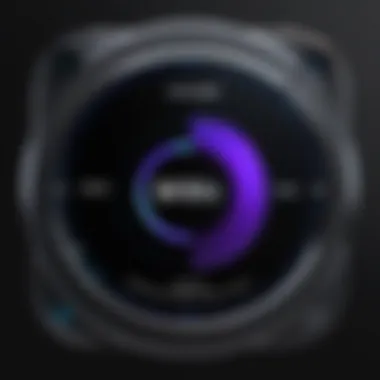
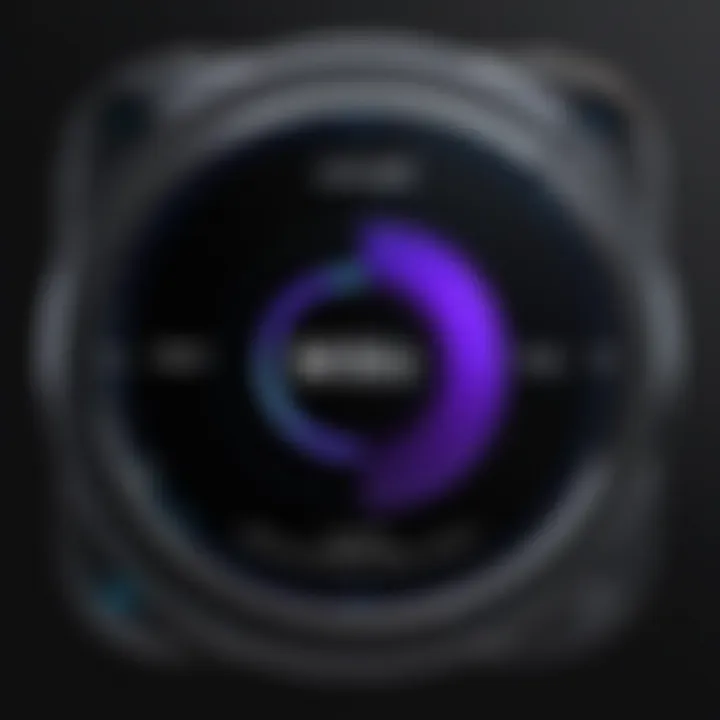
In summary, the technical specifications of the wide angle lens on the iPhone 12 Pro Max reveal its outstanding capability for capturing detailed and expansive images. While it offers many benefits, being aware of its limitations is equally important for achieving the best results in photography.
Comparative Analysis with Other iPhone Models
The comparative analysis of the iPhone 12 Pro Max's wide angle lens against other iPhone models is crucial for understanding its unique capabilities. This section provides valuable insights into the advances made with the iPhone 12 Pro Max and how they enhance photographic experience. Knowing these differences can guide potential buyers in making informed decisions based on their specific needs in photography and videography.
iPhone Pro Max vs. iPhone Pro Max
When comparing the iPhone 11 Pro Max and the iPhone 12 Pro Max, several notable differences arise regarding their wide angle lenses. The iPhone 12 Pro Max introduces a larger sensor and improved image processing capabilities, which translate into enhanced performance especially in low light conditions. The wider aperture of the iPhone 12 allows for greater light intake, leading to clearer and more vibrant images in diverse settings.
- Lens Specification: The iPhone 12 Pro Max features a better lens design which minimizes distortion often seen in wide angle photography.
- Field of View: There is also an increase in the field of view from 120 degrees in the iPhone 11 Pro Max to 125 degrees in the 12 Pro Max. This allows photographers to capture broader landscapes and expansive scenes seamlessly.
- Photographic Styles: The 12 Pro Max integrates Apple's new computational photography methods, which further refines the image quality by adjusting lighting and tone automatically.
These enhancements mark a significant step forward from the iPhone 11 Pro Max, positioning the iPhone 12 Pro Max as a more effective tool for creative professionals and enthusiasts alike.
iPhone Series Overview
The iPhone 12 series presents a cohesive assortment of models, each with their specific strengths in photography. The inclusion of the wide angle lens across all models in the series emphasizes Apple’s commitment to advancing mobile photography. While the iPhone 12 and iPhone 12 Mini share similar wide angle specifications to the 12 Pro Max, the differentiation emerges in processing capabilities and additional features exclusive to the Pro models.
- Camera Systems: The entire series benefits from advanced image stabilization and night mode features, enhancing user experience across various lighting conditions.
- ProRAW Format: iPhone 12 Pro Max includes the capacity to shoot in ProRAW, which allows for more flexibility during post-processing without sacrificing image quality.
- Matte and Gloss Finishes: Design choices in the Pro versions also contribute to a premium feel, making the photography experience more visually appealing.
Overall, iPhone 12 series represents a considerable evolution in smartphone photography, making wide angle lenses a key feature for those serious about capturing immersive photographs.
Advantages of Utilizing the Wide Angle Lens
The wide angle lens of the iPhone 12 Pro Max offers significant advantages for photographers and videographers alike. This feature distinctly enhances versatility, making it crucial in both casual and professional settings. With a wide angle lens, it is possible to capture a broader scene without the need to step back substantially. This benefit becomes especially clear in landscape photography and crowded environments.
Enhanced Landscape Photography
When utilizing the wide angle lens, landscape photography takes on a new dimension. The wider field of view allows photographers to encompass vast landscapes, from sweeping mountain ranges to expansive urban skylines. This capability brings forth a sense of depth and grandeur to images.
By capturing more elements in a single frame, the photographer can convey the scale of the scene effectively. For instance, the iPhone 12 Pro Max can include both a foreground subject and a dramatic sky, making compositions more engaging. When shooting at dawn or dusk, the colors can be more vibrant and expressive, adding to the dramatic effect. Additionally, this lens allows for more dynamic angles, encouraging creativity in composition.
One should, however, ensure good framing to avoid unwanted distortions at the edges of the image. This may require experience to master the craft of wide angle photography fully.
Creative Composition Techniques
Incorporating the wide angle lens into photography also opens avenues for unique composition techniques. The lens encourages more thoughtful framing and utilization of space within the image. Photographers can play with perspectives, leading lines, and symmetry to create striking visual narratives.
For example, one effective technique is to use leading lines, directing the viewer's eye through the scene. Roads, fences, or rivers can enhance the depth perception, drawing viewers into the photograph. Additionally, placing elements close to the camera creates a sense of scale and immersion, engaging audiences more effectively.
Creative composition with the wide angle lens also invites experimentation with subjects in the foreground. This plays into the dramatic effect of including unique elements while maintaining expansive backgrounds. As a result, ordinary scenes can transform into extraordinary visuals. White space can also be intentionally included to add tension and focus, moving away from the overly cluttered images seen in many casual photographs.
"The iPhone 12 Pro Max's wide angle lens doesn't just take a picture; it tells a story by capturing more of the world around us."
These techniques not only enhance creativity but also invite new approaches to storytelling through visuals, making the iPhone 12 Pro Max a powerful tool for both amateur and professional photographers.
Practical Applications for Videography
Videography has become increasingly essential for content creators in today’s digital landscape. The iPhone 12 Pro Max introduces various features that enhance videography, especially the wide angle lens. Utilization of such a lens provides unique perspectives, allowing for creativity and depth in video content. This section highlights the applications of the wide angle lens in videography, emphasizing important aspects such as its benefits and considerations.
Wide Angle in Action Shots
Using the wide angle lens for action shots can transform how motion is captured. The expansive field of view allows videographers to include more elements within a single frame. This is particularly useful in fast-moving scenarios, such as sports or events. The added context from the wide angle perspective enriches the viewer's experience, making them feel more a part of the action. This capability to cover more visual information leads to:
- Enhanced context: Viewers can see what’s happening around the main subject, adding layers of information to the scene.
- Dynamic compositions: It allows for creative shooting angles, making dynamic framing easier to achieve.
However, there are some considerations. Low light conditions may lead to distortion and graininess in videos. Still, when used strategically, the possibilities for creating captivating action sequences increase significantly.
Using Wide Angle for Storytelling
The wide angle lens has unique advantages when it comes to storytelling in video. It not only captures more of the environment but also creates a narrative space that traditional lenses might fail to provide. Here are some key points to consider:
- Spatial Awareness: By including more surroundings, the videographer can effectively convey a setting and context for the story.
- Emotional Depth: Shooting subjects within a larger environment can evoke a sense of solitude or freedom, making the emotional tone more powerful.
- Versatile Usage: This lens can be employed in various storytelling contexts, from capturing vast landscapes to intimate moments where the surroundings enhance the narrative.
User Experiences and Case Studies
Understanding user experiences and case studies is important to appreciate the capabilities of the iPhone 12 Pro Max's wide angle lens fully. Real-world examples provide valuable insights that technical specifications alone cannot offer. When users share their experiences, they often reveal unique insights, creative uses, and practical challenges that enhance the understanding of the lens's performance. This section focuses on professional photographer insights and feedback from everyday users, reflecting a wide array of perspectives.
Professional Photographer Insights
Professional photographers often have extensive experience with various camera systems. Their observations regarding the iPhone 12 Pro Max's wide angle lens can help potential users understand its strengths and weaknesses in practical situations.
Many photographers find the wide angle lens advantageous for capturing expansive landscapes or architecture. They appreciate the sharpness and clarity that the lens provides at wider apertures. Some professionals also favor its ability to fit more in-frame without needing to step back, which is particularly useful in cramped environments.
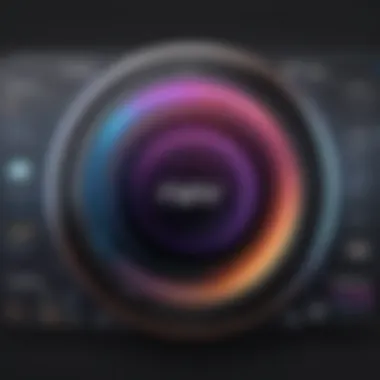
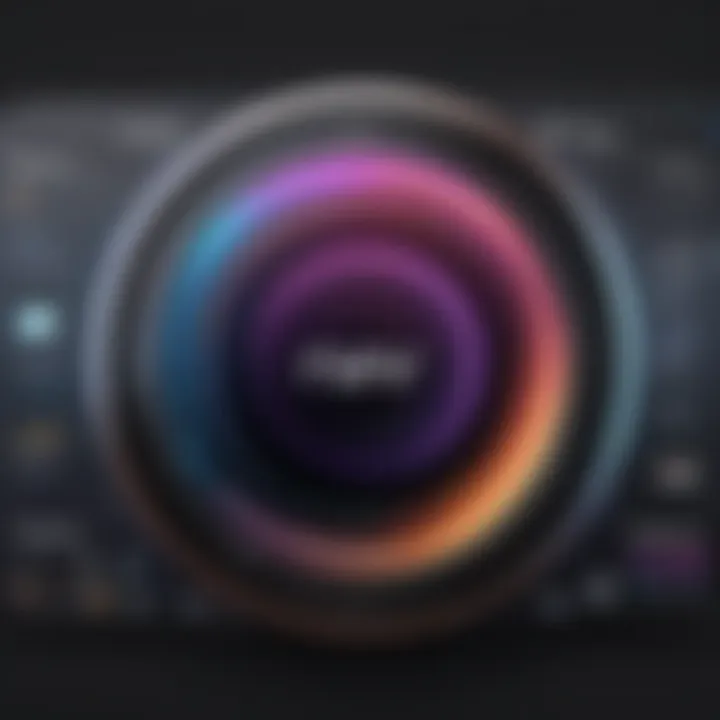
However, experts usually caution that while the lens is versatile, it does have limits. For instance, they note that low light conditions significantly impact image quality. To overcome this limitation, they recommend shooting during golden hour or utilizing additional light sources. Additionally, professional photographers often emphasize the importance of framing and composition, as wide angle lenses can exaggerate distance, distorting subjects at the edges.
"The iPhone 12 Pro Max’s wide angle lens offers a level of flexibility that makes it a valuable tool in my kit. However, understanding its limitations is key to optimizing its performance in the field."
Everyday User Feedback
Everyday users provide a different perspective on the iPhone 12 Pro Max's wide angle lens. For many, this feature simplifies their photography by allowing them to capture more of their environment without adjusting their position. Feedback often highlights the ease of use, making wide angle shots accessible even to those without extensive knowledge of photography.
Users explicitly mention that they enjoy taking family photos during outings. The wide angle lens can include more background or scenic elements, turning regular snapshots into memorable landscapes. Many users share their excitement about the lens’s performance at events like weddings or parties, where capturing large groups is essential.
On the downside, some everyday users also report concerns with distortion in photos. This issue sometimes occurs when shooting at close distances, and users often find edited adjustments necessary. Another common theme in feedback is the frustration in low light conditions, as users notice graininess or a lack of detail in images.
Overall, both professional photographers and everyday users shed light on the multifaceted value of the iPhone 12 Pro Max's wide angle lens. The collective experiences paint a realistic picture of its application in diverse situations.
Comparative Analysis with Competitor Devices
When considering the iPhone 12 Pro Max, it is essential to compare its wide angle lens capabilities against competitor devices. A comparative analysis offers valuable insights, allowing potential users to understand the strengths and weaknesses of the iPhone in relation to its competition.
This section focuses on two major competitors: Samsung Galaxy Series and Google Pixel. Understanding these comparisons helps photographers and consumers make informed choices about which device best meets their needs, especially in the realm of mobile photography and videography.
Samsung Galaxy Series Comparison
The Samsung Galaxy series, particularly the Galaxy S21 Ultra, presents a notable alternative to the iPhone 12 Pro Max, especially regarding wide angle performance. The Galaxy’s ultra-wide lens boasts a wider field of view, capturing expansive landscapes or group photos with ease. Users often praise its vibrant color reproduction and lower distortion levels.
Key features to note in this comparison include:
- Field of View: Samsung’s ultra-wide lens typically offers a wider field of view than the iPhone, which can be vital for specific shots.
- Low Light Performance: While the Galaxy cameras perform adequately in low-light conditions, real-life tests suggest that the iPhone still leads when it comes to image clarity and detail retention.
- Image Processing: Samsung's processing tends to enhance colors significantly, which can lead to overly vivid images, while the iPhone aims for a more natural representation.
These differences provide consumers with options depending on their photography style and preferences.
Google Pixel Lens Capabilities
The Google Pixel series, such as the Pixel 5, also warrants attention in this analysis. Known for its impressive computational photography, the Pixel’s wide angle lens offers strong performance, particularly in challenging lighting conditions. Its software-driven capabilities allow for exceptional image quality, often blending multiple exposures for a balanced output even in less-than-ideal circumstances.
Key aspects of the Google Pixel include:
- Image Quality: Many users find that Google’s advanced algorithms yield impressive detail and lower noise levels, even when using the wide angle lens.
- Ease of Use: Google’s camera app simplifies access to its powerful features, making it user-friendly for those new to mobile photography.
- Innovative Features: Unique functions, like Night Sight for low-light scenarios, give the Pixel an edge in specific situations.
Understanding these differences helps consumers choose the right device, matching their photographic requirements and preferences. This analysis underlines the importance of evaluating devices within the shifting landscape of mobile photography.
Limitations of the Wide Angle Lens
Understanding the limitations of the wide angle lens on the iPhone 12 Pro Max is crucial for both casual and professional photographers. This section not only highlights the shortcomings but also assists users in making informed decisions about when and how to utilize this feature effectively. Like any technology, the wide angle lens comes with its benefits and drawbacks, which are essential to consider when planning a shoot.
Low Light Performance
The low light performance of the iPhone 12 Pro Max's wide angle lens presents certain challenges. While it excels in well-lit environments, it struggles significantly in dim conditions. The lens tends to capture less light compared to standard lenses, resulting in increased noise and loss of detail. This can be frustrating when attempting to capture nighttime scenes or indoor settings with limited natural light.
When shooting in low light, here are some considerations:
- ISO Settings: Higher ISO settings may compensate for low light but can introduce grain.
- Shutter Speed: Slower shutter speeds can help, but they increase the risk of blurriness.
- Stabilization: Using a tripod or stabilizer can yield sharper images when lighting is low.
In summary, photographers should recognize that while the wide angle lens allows for expansive shots, it may not be the best choice for low-light scenarios unless other factors are well managed.
Edge Distortions and Why They Matter
One of the most common issues with wide angle lenses, including the one on the iPhone 12 Pro Max, is edge distortion. This effect can manifest as bending or stretching at the periphery of images. While such distortion can occasionally create interesting artistic effects, it also detracts from the overall image quality, particularly in architectural or landscape photography.
- Barrel Distortion: This occurs when straight lines appear curved outward at the edges. It can be most pronounced when capturing buildings or linear subjects.
- Vignetting: Users may notice darker corners in their images, which is often exacerbated by using wide apertures.
- Correction Tools: Many editing software, including Adobe Lightroom, offers distortion correction tools to handle these issues post-capture.
It's essential for photographers to keep these distortions in mind when composing shots. While they can be creatively used, the standard expectation should be that they exist and may need correction in later editing stages.
"Understanding and recognizing the limitations of your equipment can significantly improve your photography skills."
By acknowledging these limitations, users of the iPhone 12 Pro Max can navigate its features more effectively, leading to enhanced photographic results.
Advanced Techniques for Maximizing Image Quality
Maximizing image quality with the iPhone 12 Pro Max's wide angle lens requires understanding both practical techniques and the technology behind the lens. Advanced techniques can enhance the clarity, detail, and overall visual appeal of your images. They can separate mediocre pictures from those that truly stand out. Below are some essential strategies to make the most out of this powerful tool.
Using External Lenses
External lenses provide an opportunity to expand the creative capabilities of the wide angle lens. They can offer different effects that may not be possible with the built-in lens alone. Options such as fisheye or macro lenses can enhance flexibility for various photography styles. When selecting an external lens, consider the following:
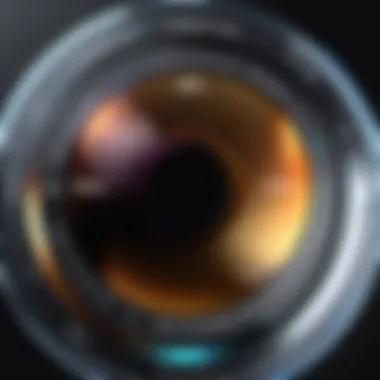
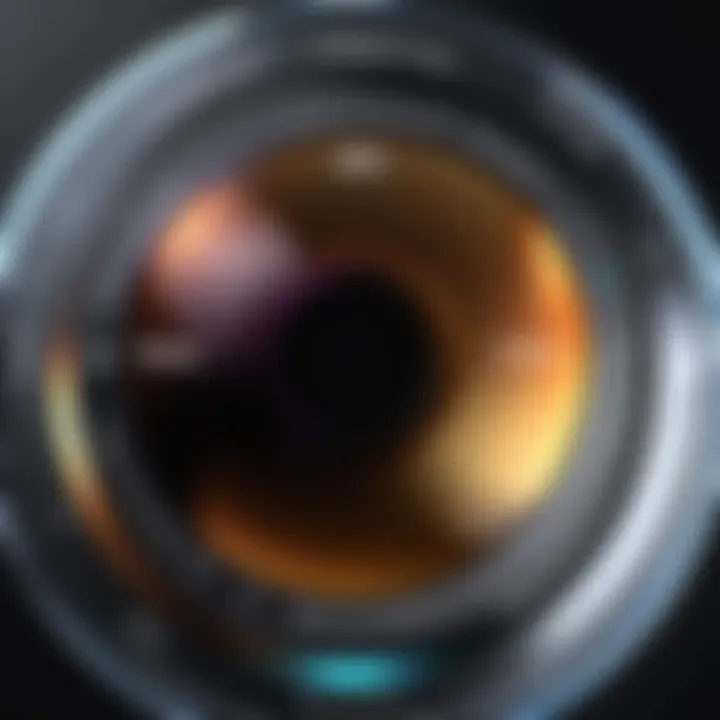
- Compatibility: Ensure that the lens attaches securely to the iPhone 12 Pro Max. Brands like Moment and Olloclip offer lenses designed specifically for this model.
- Quality: Opt for high-quality optics to avoid distortion and maintain image sharpness.
- Portability: Choose lightweight, compact options that are easy to carry when traveling.
Utilizing an external lens can open up new avenues for creativity. For instance, a fisheye lens can provide a dramatic perspective in landscape photos or architectural shots. This can lead to visually striking images that attract attention.
Post-Processing Tips
Post-processing is an essential step in achieving high image quality. This implementation can mean the difference between an ordinary photo and an exceptional one. Here are some tips to consider when editing photos captured with the wide angle lens:
- Adjust Distortion: Wide angle lenses sometimes produce noticeable barrel distortion. Tools like Adobe Lightroom or Snapseed allow you to correct this issue easily.
- Enhance Lighting and Contrast: Wide angle shots often include significant variations in light. Adjusting the brightness and contrast can boost visual interest.
- Sharpen the Image: Subtle sharpening can bring out detail without introducing noise. Careful use of sharpening tools can add clarity to the entire image.
- Crop for Composition: Many wide angle photos can benefit from cropping. This helps isolate the subject and enhances focus. However, ensure you maintain an appropriate aspect ratio.
Utilizing post-processing tools effectively can transform images significantly. Well-edited images not only elevate the visual aesthetic but also engage viewers at a deeper level.
"Post-processing is as crucial as capturing the moment. It turns a good image into a great one."
These advanced techniques, when applied thoughtfully, can significantly maximize the image quality of photos taken with the iPhone 12 Pro Max's wide angle lens. By experimenting with external lenses and honing skills in post-processing, photographers can achieve striking results.
Assessing the Impact on Mobile Photography Trends
The iPhone 12 Pro Max represents a significant point in the evolution of mobile photography. The advent of its wide angle lens has not only enhanced the way users capture images, but it has also influenced broader trends in mobile photography. Understanding the impact of this technology is crucial for both consumers and creators alike. The integration of advanced camera functionalities shifts how photographs are composed and shared. Foremost, it paves the way for a more immersive viewing experience.
Shift in Consumer Preferences
In a landscape that is increasingly shaped by visual content, consumers are demonstrating distinct preferences when it comes to smartphone photography. Many users are now prioritizing devices that offer superior photographic capabilities, including expansive field of views enabled by wide angle lenses. The iPhone 12 Pro Max has led to an increase in demand for wide angle photography, allowing users to capture more in one frame.
- This trend is evident in how social platforms like Instagram and Facebook are inundated with wide-angle shots.
- Features that allow for creative expression have become non-negotiable market differentiators for tech-savvy consumers.
The increase in the wide angle capabilities has also changed how users approach content creation. There is a shift from merely capturing moments to crafting visually compelling stories. Users are leaning toward cameras that deliver high-quality imagery without requiring extensive post-processing skills.
Influence of Social Media
Social media has been a catalyst for the rise of advanced smartphone cameras. The iPhone 12 Pro Max's wide angle lens plays a crucial role here, allowing users to produce content that resonates. This functionality aligns with the visual-centric nature of platforms such as Instagram and TikTok, where aesthetically pleasing content is rewarded with engagement.
"Smartphones with advanced photography features are more likely to be shared and appreciated on social media, driving users toward such devices."
The influence of social media on photography trends cannot be overstated. Users increasingly seek to replicate the visuals they see online. As a result, they are likely to be attracted to devices that provide the tools necessary to achieve similar effects. This phenomenon not only reflects a desire for enhancement in personal photography but also stimulates an ongoing dialogue about what constitutes good photography.
The wider the vista one can capture, the more likely it is to make an impact on social platforms. Hence, the wide angle lens of the iPhone 12 Pro Max has not only enhanced personal creativity but has also shifted the paradigm of mobile photography by responding to the evolving demands of a visually driven society.
In summary, assessing these trends provides insights into consumer behavior and the influence of technology on creative expression. The integration of wide angle lenses into devices like the iPhone 12 Pro Max is setting a standard for future smartphone innovations.
Future Innovations in Smartphone Camera Technology
The domain of smartphone cameras is rapidly evolving, driven by consumer demands and advancements in technology. As discussed throughout this article, the wide angle lens is pivotal in enhancing mobile photography and videography. However, it is essential to recognize that the innovation does not stop with current features. Future advancements hold the promise of redefining how users engage with smartphone cameras, providing unparalleled benefits and functionality.
Anticipated Features for Upcoming Models
Smartphone manufacturers consistently seek to push the envelope in camera technology. The future will likely unveil several features that may further enhance user experience. Notable innovations include:
- Increased Megapixel Count: Upcoming models may feature higher megapixel sensors, promising sharper images and improved detail.
- Better Low Light Performance: Enhanced sensors may offer improved capabilities in dim conditions without compromising image quality.
- Multi-Lens Integration: We may see an expansion in multi-lens setups, allowing for a broader range of photography styles and options.
- Variable Aperture Options: This feature could allow users to adjust depth of field, providing better control over focus and blur.
These anticipated features could significantly impact how mobile users capture and share their creativity. As the industry evolves, consumers can expect more versatile and sophisticated tools at their fingertips.
Integration of AI in Camera Functions
Artificial Intelligence will undoubtedly play a crucial role in future smartphone cameras. Its integration can lead to smarter photography, making the process intuitive and accessible to users of all skill levels. Some potential benefits of AI include:
- Automatic Scene Detection: AI could recognize various shooting conditions and automatically adjust camera settings for optimal results.
- Enhanced Image Processing: Advanced algorithms can improve post-capture image quality, reducing artifacts and noise.
- Real-time Editing Features: AI-driven enhancements could allow for in-camera edits, such as removing unwanted objects or enhancing colors on the fly.
"The future of smartphone photography is not just about hardware; it's about intelligent software that understands and enhances the art of photography."
The evolution of smartphone cameras is firmly tied to technological progress. Understanding these innovations can equip users to maximize the capabilities of their devices, ensuring that creativity remains boundless.
Culmination: The Long-term Value of the Wide Angle Lens
The wide angle lens on the iPhone 12 Pro Max stands out as an essential feature for both novice and advanced photographers. Its capabilities extend beyond merely capturing wide scenes; they significantly influence the overall user experience. The lens allows for innovative compositions and dramatic perspectives, enabling users to express their creativity in more profound ways.
Understanding the value of this lens involves recognizing its impact on both mobile photography and videography. As technology advances, the demand for superior and versatile camera features continues to rise. Photographers can create distinctive content with the iPhone 12 Pro Max, setting it apart from its competitors.
Summarizing Key Takeaways
- Versatility: The wide angle lens provides users with the flexibility to shoot expansive scenes, group photos, and dramatic landscapes effectively.
- User Experience: Enhanced image quality and depth of field contribute to a more enjoyable shooting experience, fostering creativity.
- Market Relevance: As the landscape of mobile photography evolves, the inclusion of high-quality wide angle lenses plays a critical role in staying competitive.
- Future Proofing: The growing importance of social media and online content creation ensures that the wide angle lens will maintain its value in future smartphone models.
Final Thoughts on Evolution of Smartphone Cameras
The evolution of smartphone cameras illustrates a broader trend toward increased capabilities and complex functionalities. The iPhone 12 Pro Max's wide angle lens is a testament to this trend. It not only enhances photographic versatility but also responds to the rising expectations of tech-savvy consumers.
With companies investing in the integration of artificial intelligence and computational photography, the future looks promising. The combination of user-friendly interfaces and powerful lenses such as the wide angle one will likely define the next generation of smartphones. As consumers, we may witness even more impressive innovations that reshape our understanding of mobile photography.
The journey of smartphone cameras is far from over. Those looking to capture their world uniquely and creatively will continue to find value in comprehensive lens functionalities like those offered by the iPhone 12 Pro Max.







